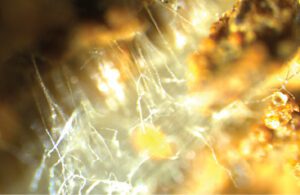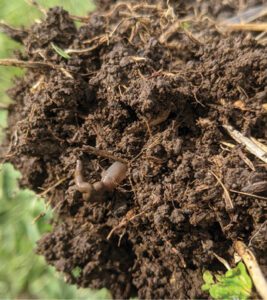
John Kempf is an entrepreneur, speaker, podcast host and teacher. He is passionate about the potential of well managed agriculture ecosystems to reverse ecological degradation. John believes regenerative agriculture management systems can:
- regenerate producer profitability and create economic incentives for producers
- produce crops that are inherently resistant to possible infections by insects, bacteria, fungi, nematodes and viruses, eliminating the need for pesticides.
- produce food that can regenerate public health, with an elevated content of immune compounds that transfer plant immunity to livestock and people, providing food as medicine.
- rapidly sequester carbon, build soil organic matter much faster than commonly expected, restore hydrological cycles, cool the climate, and reduce the water requirements of a crop.
All of these benefits and more can be achieved simply by managing soils and crops differently, in a manner that enhances rather than suppress biological function.
This article is a summary of John’s excellent webinar entitled: How Healthy Plants Create Healthy Soils. To view this full webinar or access John’s other resources, please visit www.johnkempf.com
For decades, it has been widely believed that healthy soils create healthy plants. People elaborate to say healthy soil makes healthy food which makes healthy people. The view is that it all starts with the soil. While that can be the case, the process is actually much quicker and much more effective to focus on plants first, noting that it is actually healthy plants that create healthy soil. The main difference between these two schools of thought is an emphasis on photosynthesis. Photosynthesis means plants are sequestering carbon dioxide from the air, converting it into sugars and sending a significant portion of those sugars through the roots as root exudates to build soil OM.
Without the contribution of plants soil would be nothing more than decomposed rock particles. But through plants and their root exudates, biology is fed, minerals are broken down, fungal systems are built, and healthy soil is created. Let’s go step by step through the following diagram.

Step 1: Full capacity photosynthesis –
This is very tough to find in nature for a variety of reasons. The most common limitations include not enough moisture, not enough CO2, not enough light, and not enough nutrients. The plants we are used to seeing in conventional agriculture are only at about 15-20% photosynthetic capacity. There are too many factors at play to think we can reach 100% photosynthesis, however, by addressing the limitations above, we can easily increase the capacity up to 50-60%. So if we go from 20% to 60% capacity, we have produced 3x the sugars per 24 hr cycle. 3x sugars does not mean you will get 3 times the grain yields, or biomass, or even root exudates, but it is likely that you will increase each of those at least some. The flow of those extra sugars goes to different places depending on the stage of the plant. When the plant is working on grain or fruit fill, that is where the extra sugars will go. But when the plant is working on framing during its younger stages, well over half of the sugars may be released as exudates into the rhizosphere. That leads us to Step 2.
Step 2: Bacterial Digestion –
With a greater amount of sugars from the root exudates, more bacteria are being fed, digesting extra carbon, hydrogen, and oxygen from the glucose (C6H12O6). But what is largely absent in root exudates are the basic minerals such as calcium, zinc, magnesium, and copper etc. And yet, bacteria need these minerals to form their bodies.
Step 3: Mineralization –
Bacteria extract the needed minerals they need from the soil profile and incorporate those into their cells through the process of mineralization. As the life of bacteria is very short- often measured in hours, they soon perish, and these mineral enhanced microbial cells are incorporated back into the system, making the nutrient available to the plants.
Step 4: Microbial Metabolite Nutrition –
These microbial cells then feed roots and take the minerals with them. When plants are able to access these microbial metabolites, they become highly efficient and start storing up reserves in the form of lipids (plant fats and oils). We see this in the field as a waxy sheen on leaf surfaces that provides resistance to airborne pathogens, but below the soil surface, lipids are also moving into the roots. Onto the next part of the food chain.

Saprotrophic and symbiotic fungi transfer “liquid carbon” from roots to free-living N-fixing bacteria and archaea within the rhizosheaths of plants grown with N. Photo By: Phill Lee
Step 5: Fungal Digestion –
When we now have lipids moving into the rhizosphere, something very interesting happens. Because bacteria are not able to digest lipids, this triggers very strong fungal digestion. We get increasing colonization of mycorrhizal fungi and other types of beneficial fungi in the soil profile that begin consuming the lipids.When fungus digest something they break it down again and again and again until it can’t be broken down anymore. After that point they release it back into the soil profile. This process is called humification. Fungal digestion of lipids and carbs creates stable organic matter like glomalin, for instance, which aggregates soil particles and produces stable organic matter. When we get to this step, we are building the soil to have that “chocolate cake” look – porous, moist, and rich; not to mention highly productive and resilient! So we want to produce plants that have the highest levels of fats and lipids to make our soils as healthy as possible.

Photo By: John Rutherford
If we are considering how to improve soil health as efficiently as possible, we must think about the plants first and seek to maximize photosynthesis, which is the engine that drives the soil system. Doing so not only triggers the rest of the steps in the diagram automatically, but it yields immediate economic results in the process.
This article first appeared in the 8th Edition of Green Cover's Soil Health Resource Guide.
Also check out the 10th edition, our latest Soil Health Resource Guide, over 90 pages packed with scientific articles and fascinating stories from soil health experts, researchers, farmers, innovators, and more! All as our complimentary gift to you, a fellow soil health enthusiast!